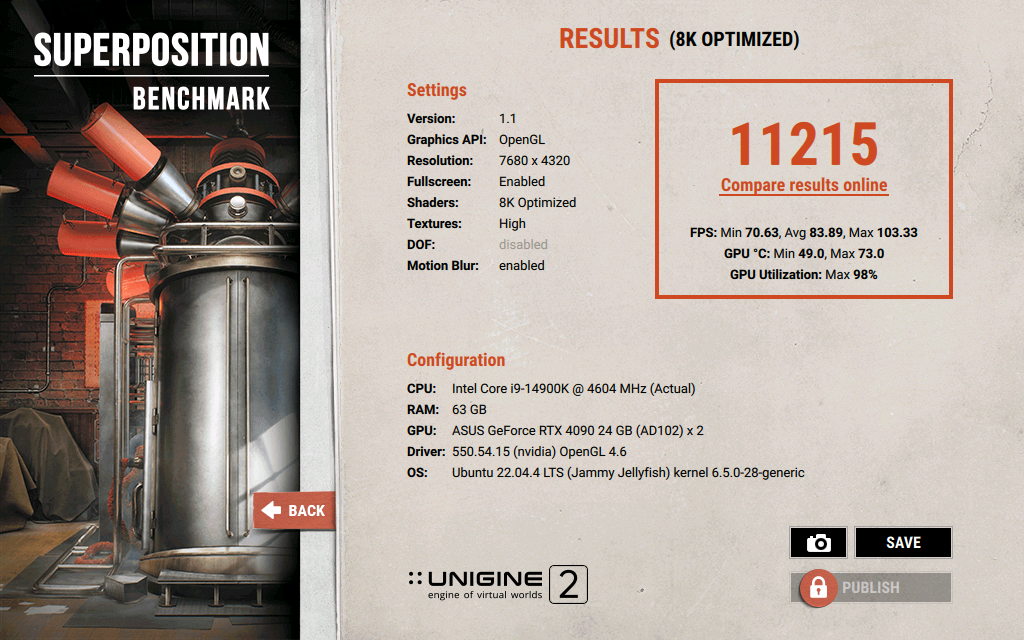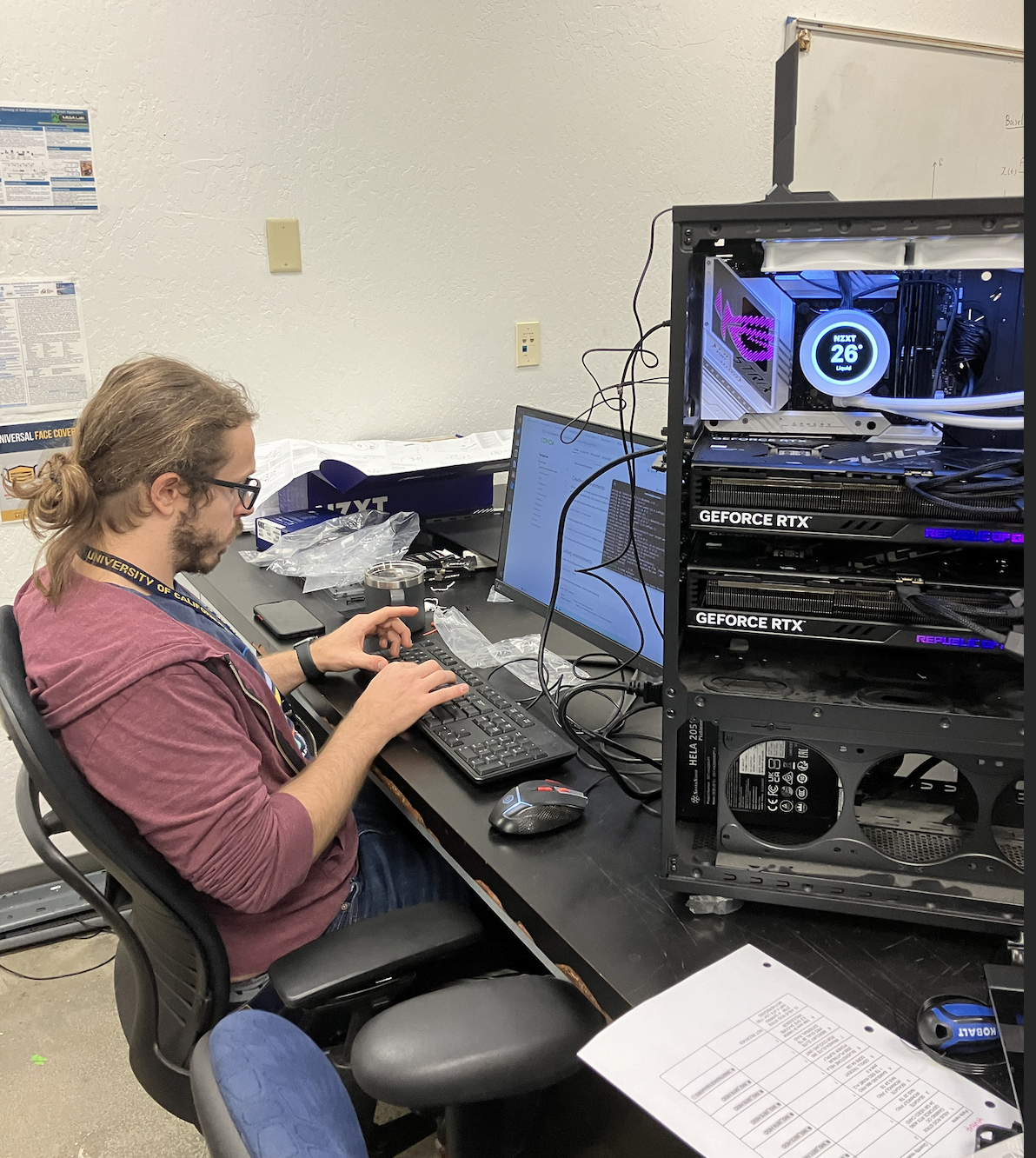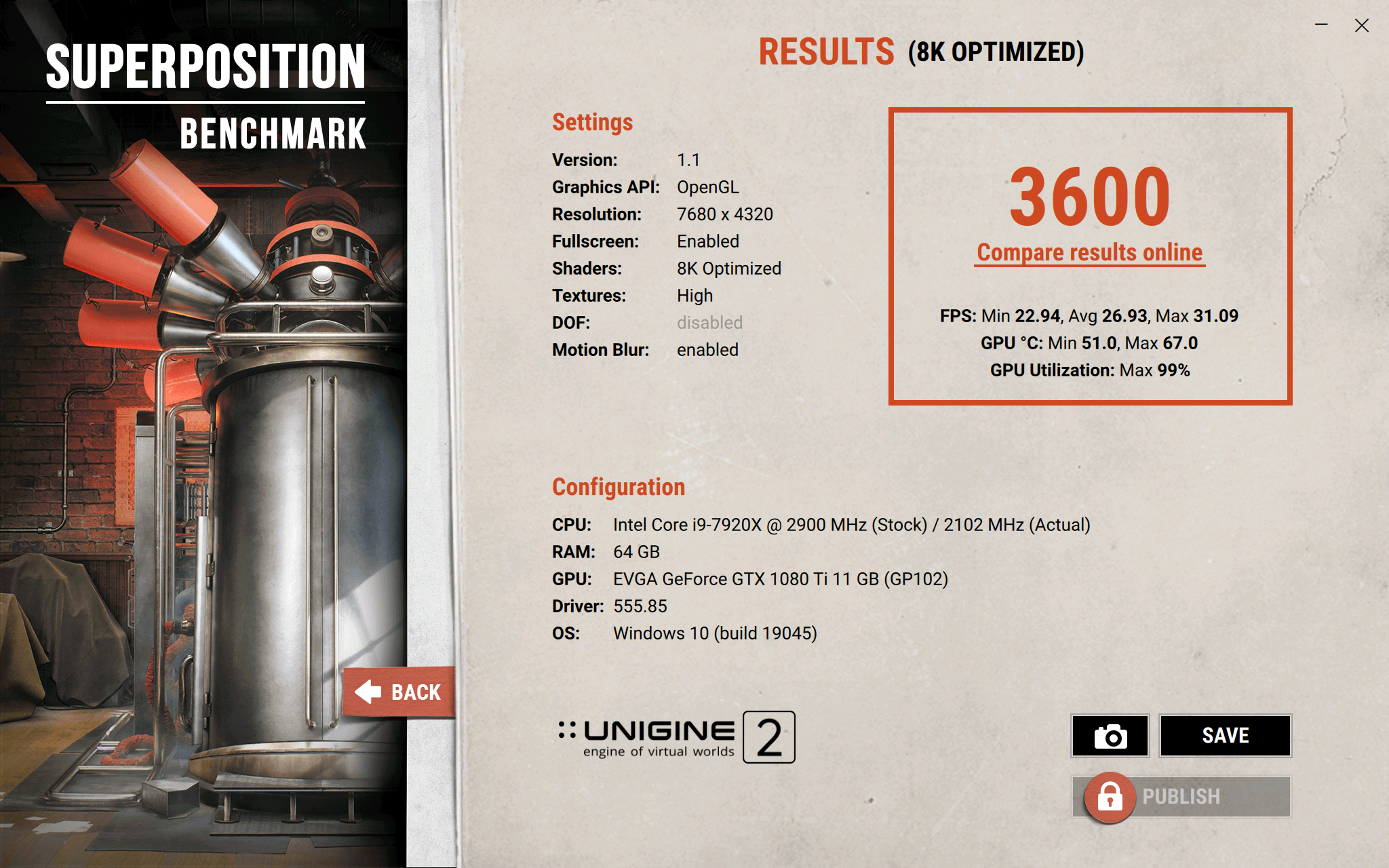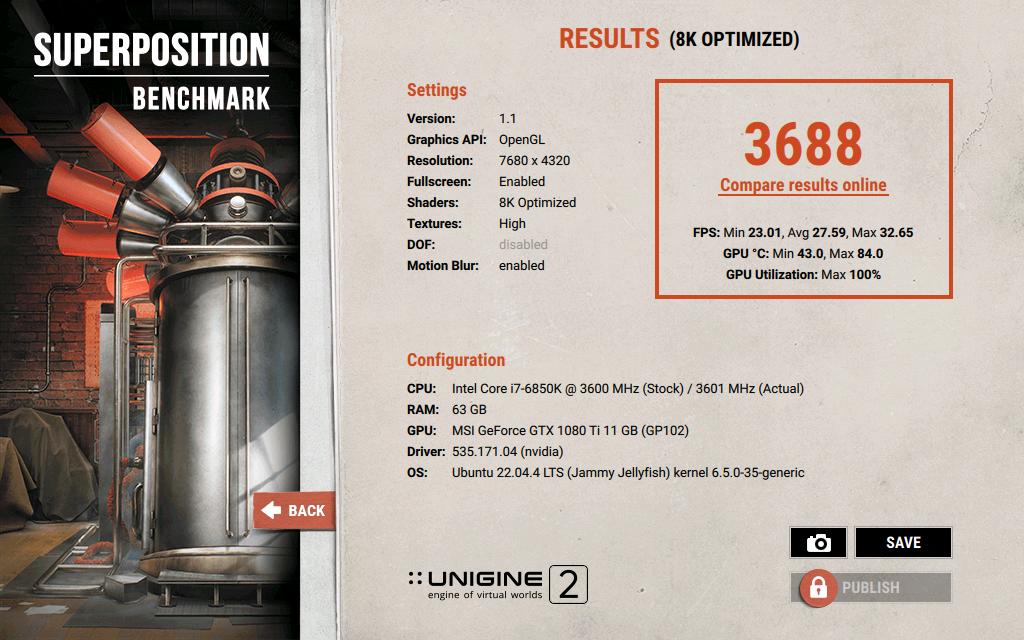The MESA Lab has recently built its new powerful computer designed for machine learning and BIG DATA training, focusing on application domains like remote sensing, data-driven controls, edge computing, etc.
The benchmark test was done using UNIGINE2 Superposition Benchmark and Gravity Mark GPU Benchmark.
The settings for the Superposition benchmark are as follows:
Version: 1.1
Graphics API: OpenGL
Resolution: 7680 x 4320
Fullscreen: Enabled
Shaders: 8K Optimized
Textures: High
DOF: Disabled
Motion Blur: Enabled
The result for Unigine is shown in the image below.
The score achieved is 11215. You can also check the leaderboards at the following link and compare the results: https://benchmark.unigine.com/leaderboards/superposition/1.x/8k-optimized/single-gpu/page-1

The MULTI GPU SPLIT mode was used in the Gravity Mark benchmarking with the benchmark settings as:
API: Vulkan
Platform: Linux
Resolution: 7680 x 4320
Antialiasing: Temporal
Asteroids: 400,000
The results for benchmarking are shown in the images below. The score achieved is 6,005. You can also check the leaderboards at the following link and compare the results: https://gravitymark.tellusim.com/leaderboard/?count=4m&size=8k

Find the full specifications and setup images below.


Additional Computers - 1:
Besides the primary machine learning and big data computer, the MESA Lab also operates several other high-performance computers, each optimized for specific research needs:
CPU: Intel Core i9-7920X
GPU: NVIDIA GeForce GTX 1080 Ti
RAM: 64 GB DDR4 2400 MHz


Additional Computers - 2:
The benchmark score for another computer with the GPU memory for the following configuration is shown in the figure below.
The settings for the Superposition benchmark are as follows:
Version: 1.1
Graphics API: OpenGL
Resolution: 7680 x 4320
Fullscreen: Enabled
Shaders: 8K Optimized
Textures: High
DOF: Disabled
Motion Blur: Enabled
The result for Unigine is shown in the image below.
The score achieved is 3688.




